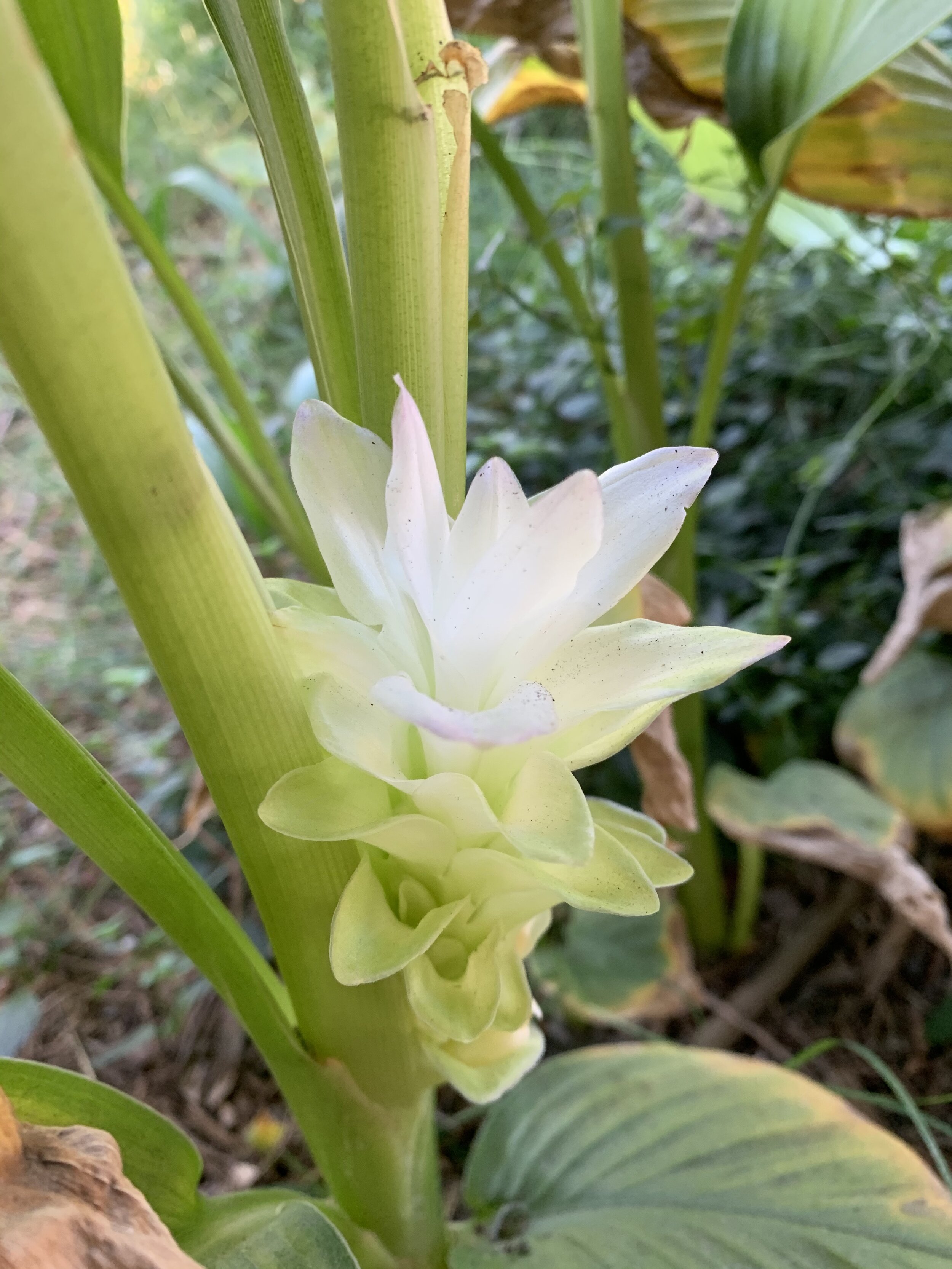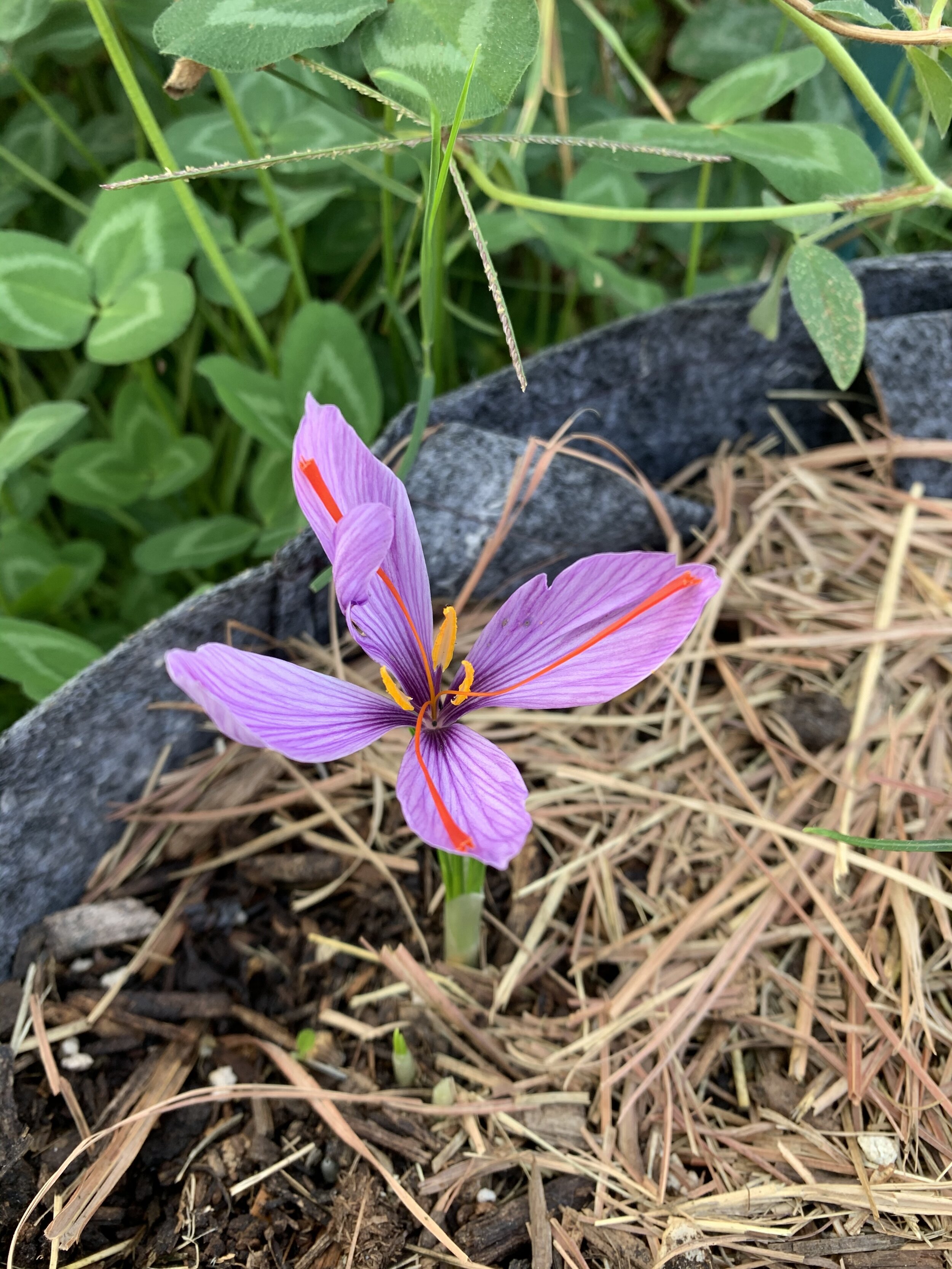Grow your own spice cabinet
Nina Weithorn (left) and Nina Anakar teamed up in 2020 to convert a barren lot into Ziza Urban Farm. Among their first projects: Teaching beginning gardeners how to grow their own spices. (Photo source: Nina Anakar)
Nina Anakar, a chef and co-founder of Ziza Urban Farm in Los Angeles, set about growing her own spice cabinet as part pet project, part an effort to empower others to grow their own growing spices.
“The process is actually quite simple,” said Anakar. “In most cases, the spice is actually the seed of the plant. So not only can you dry it and use it to flavor your foods, you can use some of your harvest to regrow your spices the following season.”
Anakar, a first generation Moroccan-American, started Ziza Urban Farm with her friend Nina Weithorn in 2020 in part to share tips and information about growing food and medicinal herbs with their community. (Read their story.) She’s found that zeroing in on growing five popular spices is an easy way to get people to become more comfortable growing food.
What follows is their guide to cultivating your own spice garden.
Turmeric is a global favorite that’s easy to grow in USDA Hardiness Zones 8 through 10. It can also be grown in areas with cooler, shorter summers — just move the plants indoors before the last frost. (Photo source: Nina Anakar)
TUMERIC
Origins: Turmeric, the golden colored strongly flavored spice, is having a moment. This ancient spice, celebrated for centuries as both food and medicine, has resurfaced within the health and nutrition community thanks to curcumin, a healing substance responsible for its vibrant color. Curcumin has significant anti-inflammatory properties said to rival those found in ibuprofen.
In Indian culture, the importance of turmeric goes far beyond medicine. The Hindu religion sees turmeric as auspicious and sacred. Native to southern India and Indonesia, turmeric is widely cultivated on the mainland and on the islands of the Indian Ocean. In ancient times, it was used as a perfume as well as a spice.
Grow: Turmeric is best planted in the spring and easy to grow in pots or grow bags. It grows horizontally under the soil, so a wide, shallow pot is better than a narrow, deep pot.
To plant, take a chunk of a rhizome with at least a couple of eyes, or nodes. Cover the rhizome with soil, but just barely (about one inch), leaving the nodes facing up. These plants like rich soil so give them compost and mulch.
If the leaves brown, it’s a sign they need more water. If they turn yellow, it needs fertilizer. Turmeric prefers growing in the shade—ideally in dappled light, like under a fruit tree.
Turmeric is grown from roots also called rhizomes. Plant fresh rhizomes in the spring. (Photo source: Nina Anakar)
Harvest: Turmeric is ready to harvest after about eight to ten months of growing. The foliage dies back when it’s ready to be dug out. If you want to harvest some but allow the plant to keep growing, dig down gently under the soil and break off a piece of the rhizome. The plant will continue growing as long as you haven’t disturbed the roots too much.
Dry: Slice thinly into uniform pieces and use a dehydrator to dry them. Depending on the climate within your home and the water content of the harvest, it will take about three to four hours in a dehydrator at 120 degrees. You may also sun-dry them on a sheet tray or other surface in a well ventilated area. Dry until brittle.
Store: Store dried turmeric pieces or powder in a cool, dry, dark place.
Culinary uses: Turmeric is earthy and floral in flavor. A little goes a long way in both color and flavor. Use it in medicinal teas and savory dishes, such as soups and stews. In sweet baked goods, or as a food coloring, instead of saffron, in rice dishes.
To use it for tea, leave the thin slices whole or break them into smaller pieces. To make the spice powder, simply grind the dried pieces up in a spice grinder (or a coffee grinder reserved for spices), or work them in a mortar and pestle for a more coarse grind.
GINGER
Before planting, look for a plump, smooth-skinned ginger root, which indicates good health. (Photo source: Nina Anakar)
Origins: The origin of ginger is unknown and it does not exist in the wild. But evidence suggests it has been cultivated by humans for culinary and medicinal use for more than 5000 years, beginning in Austronesia and, eventually, exported to the Pacific Islands, India, and China. The ginger trade, which took place in India, the Middle East, and Mediterranean, has been traced to around the 1st Century CE. The first gingerbread man is credited to the court of Queen Elizabeth I, who had them made in the likenesses of visiting dignitaries.
Grow: Ginger thrives in warm, humid climates with plenty of light. Experts disagree on the amount of sun it needs, and advice ranges from partial shade to five hours a day of direct sun. Add compost once or twice a year to produce the loamy soil it prefers, which allows water to drain easily so the rhizomes don't get waterlogged and rot.
Harvest: Ginger can be harvested at any time, but most people advise waiting a minimum of five months, longer if you want more flavor. One sign of readiness is when the leaves yellow and die back. Dig up part or the entire plant to harvest.
Dry: The simplest way to dry ginger is to place it in a sunny window for three or four days. If you’d rather not wait that long, place the ginger slices in a dehydrator or low oven (no hotter than 150 degrees). Check the ginger every half hour or so.
Store: Store dried ginger pieces or powder in a cool, dry, dark place.
Culinary uses: Ginger is bright, peppery, sweet, and spicy. Grated fresh, it's a great option for adding zing to a marinade, sauce, salad dressing, soup, or any kind of sauté or stir fry. You can use it fresh or dried in a medicinal tea, which is said to stimulate digestion.
SAFFRON
Origins: Humans have cultivated the crocus flower from which saffron threads are harvested for more than 3,500 years. Historians and botanists have yet to agree on where it’s originally from but Iran, Greece, and Mesopotamia are among the possibilities.
Grow: Saffron is a fall-blooming corm, which means it is bulb-like and goes dormant in the summer. This is a Mediterranean plant that prefers dry summers. Best planted in early fall, it can take up to a year to flower. Nina Anakar has successfully grown it in a 15-gallon grow bag and in a raised garden bed, with other perennial herbs and flowers.
Harvest: The saffron flower consists of three components: the purple petals, the yellow stamens (the male part of the flower), and three red/orange pistils (the female part). The three red/orange pistils are the source of the spice, which you can pluck from each flower while in bloom.
Dry: Spread pistils on a flat surface to air dry.
Collect saffron pistils with a pair of tweezers. (Photo source: Nina Anakar)
Store: Store saffron in a cool, dry, dark place.
Culinary uses: Saffron is floral, very aromatic, and subtle in flavor. A little can go a long way. Take a small pinch and let it bloom in a few tablespoons of warm liquid (broth or water) for five to ten minutes before using. Add it to savory dishes that include a broth component, such as soup or stew. Or lightly mix the bloomed saffron into a rice-based dish, such as a paella or a pilaf.
Paprika
Origins: Red paprika originated in Southern Mexico, Central America, and the Antilles Islands. It was used as a seasoning and as medicine to promote healing. One theory holds that Christopher Columbus discovered it on his explorations and introduced it to Europe. It has long been a staple in Hungarian food; Hungarians are the ones who named it paprika. Paprika was not used widely in the United States until sometime in the mid-twentieth century.
Red paprika peppers are usually the sweetest; brown or golden-yellow ones are the hottest. (Photo source: Nina Anakar)
Grow: Paprika is easy to grow in the summertime and thrive in heat, just like any other pepper. You can grow it in a raised bed, in the ground, or in a pot. They’re best planted in spring and like regular waterings and nutrient-rich soil. Peppers can take about three to four months to grow from starter plants.
Harvest: Use pruner or a sharp knife to harvest ripe peppers from the plants. Leave a bit of stem attached.
Dry: Nina Anakar likes to string the peppers and leave them to hang in a well-ventilated area. If you don’t have the outdoor space, use a dehydrator machine, or put them in an oven at low temperature for several hours. Use a spice grinder to make chili flakes, or grind them into a powder.
Store: Store dried peppers in a cool, dry, dark place.
Culinary uses: Paprika is sweet and fruity and gives off mild heat. Add the powder or chili flakes to olive oil and cook over medium low heat to use as a base for soups, stews, marinades, sautés, braises, and more. You can rehydrate your dried peppers and blend them into a chili paste to use in various Mexican dishes or to make Moroccan harissa. Peppers are also delicious when pickled or lacto-fermented in a simple water and salt brine.
Za’atar
Za’atar has a flavor profile that combines those of sweet marjoram, thyme and oregano. It’s not to be confused with Z'atar, an herbal blend of several ingredients. (Photo source: Nina Anakar)
Origins: Za'atar is native to the eastern Mediterranean region and considered a staple kitchen ingredient in Greece, Lebanon, Turkey, and Syria. The plant is known as Zahter in Turkey and harvested from the mountains bordering northern Syria. It is potentially endangered in Turkey due to demand, soil erosion, and global warming. In countries like Syria and Lebanon, it’s cultivated to keep up with demand.
Grow: The herb grows similarly to other hearty perennial Mediterranean herbs, such as oregano and thyme. It prefers full sun and dry soil, and needs no fertilizer to grow. Za’atar also grows easily in a pot or other container.
Harvest: Once the plant is mature, you can harvest about half the plant at a time.
Dry: Dry bunches of the herb by hanging it upside down. Space it out on a well-ventilated surface to air dry, or place it in a dehydrator until the stems are brittle and break easily when you snap them.
Store: Store in a cool, dry, dark place.
Culinary uses: The flavor is bitter, floral and earthy—similar to a mix of oregano and thyme. Use the herb fresh or dried in a variety of savory dishes, as you would rosemary, oregano, or thyme. While it can be used on its own, the spice is often served up in a blend of seasonings that includes dried oregano, thyme, and marjoram, sumac, and toasted sesame seeds. The seasoning is delicious in dressings, as a garnish on dips, sprinkled on flatbreads, or on roasted vegetables.
















